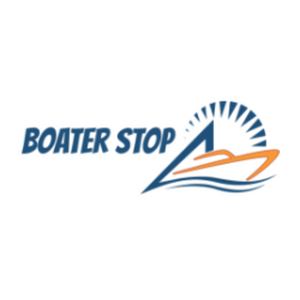Actisense
Actisense Protective Screw Cover f/NMEA2000 Male Micro Connectors - 10-Pack [A2K-SCREWCAP-10-M]
$22.99$24.20Unit price /UnavailableActisense
Actisense Rear Panel Mount NMEA2000 Wired Micro 5-Pin - Male [A2K-PMW-M]
$21.99$22.34Unit price /UnavailableActisense
Actisense NMEA2000 Right Angle Micro Field Fit Connector - Male [A2K-FFC-RM]
$35.99$37.09Unit price /UnavailableActisense
Actisense NMEA2000 Right Angle Micro Field Fit Connector - Female [A2K-FFC-RF]
$34.99$36.93Unit price /UnavailableActisense
Actisense NMEA2000 Straight Micro Field Fit Connector - Male [A2K-FFC-SM]
$33.99$36.00Unit price /UnavailableActisense
Actisense NMEA2000 Straight Micro Field Fit Connector - Female [A2K-FFC-SF]
$33.99$35.30Unit price /UnavailableActisense
Actisense NMEA2000 Mid Bulk Cable Reel - 100M [A2K-BULK-100MID]
$611.99$647.34Unit price /UnavailableActisense
Actisense NMEA2000 Micro Bulk Cable Reel - 100M [A2K-BULK-100M]
$502.99$532.00Unit price /UnavailableActisense
Actisense A2K-TDC-0M25 NMEA2000 Micro Cable Assembly - 0.25M [A2K-TDC-0M25]
$36.99$39.18Unit price /UnavailableIn stock (150 units)Actisense
Actisense A2K-TDC-0M5 NMEA2000 Micro Cable Assembly - 0.5M [A2K-TDC-0M5]
$40.99$43.30Unit price /UnavailableIn stock (150 units)Actisense
Actisense A2K-TDC-2M NMEA2000 Micro Cable Assembly - 2M [A2K-TDC-2M]
$45.99$48.28Unit price /UnavailableIn stock (59 units)Actisense
Actisense A2K-TDC-3M NMEA2000 Micro Cable Assembly - 3M [A2K-TDC-3M]
$50.99$53.23Unit price /UnavailableIn stock (48 units)Actisense
Actisense A2K-TDC-4M NMEA2000 Micro Cable Assembly - 4M [A2K-TDC-4M]
$54.99$57.87Unit price /UnavailableIn stock (30 units)Actisense
Actisense A2K-TDC-5M NMEA2000 Micro Cable Assembly - 5M [A2K-TDC-5M]
$59.99$62.59Unit price /UnavailableIn stock (36 units)Actisense
Actisense NMEA2000 Smart Universal Micro Terminator [A2K-TER-U]
$45.99$48.51Unit price /UnavailableIn stock (88 units)Actisense
Actisense NMEA2000 Micro Terminator - Male [A2K-TER-M]
$19.99$20.86Unit price /UnavailableIn stock (97 units)Actisense
Actisense NMEA2000 Micro Terminator - Female [A2K-TER-F]
$19.99$20.86Unit price /UnavailableIn stock (100 units)Actisense
Actisense NMEA2000 Micro T-Piece w/Female Connectors 3M UL Certified Cable [A2K-MPT-2]
$55.99$59.23Unit price /UnavailableIn stock (30 units)Actisense
Actisense NMEA2000 Micro Starter Kit w/MPT-2, TER-U (x2), T-MFF (x2) TDC-4M [A2K-KIT-4A]
$261.99$276.64Unit price /UnavailableIn stock (7 units)Actisense
Actisense NMEA2000 Micro Starter Kit w/MPT-2, TER-M (x2), T-MFF (x2) TDC-6M [A2K-KIT-2A]
$208.99$220.92Unit price /UnavailableIn stock (7 units)Actisense
Actisense NMEA2000 Micro Starter Kit w/MPT-2, TER-M (x2), T-MFF (x2) TDC-2M [A2K-KIT-1A]
$197.99$209.19Unit price /UnavailableIn stock (7 units)Actisense
Actisense SeaTalkNG to NMEA2000 Adapter Cable [STNG-A06045]
$57.70Unit price /UnavailableIn stock (12 units)Actisense
Actisense WiFi NMEA 0183 to NMEA2000 Gateway w/PC Interface - ISO Connection [WGX-1-ISO]
$360.99$382.38Unit price /UnavailableIn stock (10 units)Actisense
Actisense NMEA2000 to WiFi Gateway [W2K-2]
$285.99$302.93Unit price /UnavailableIn stock (10 units)

























